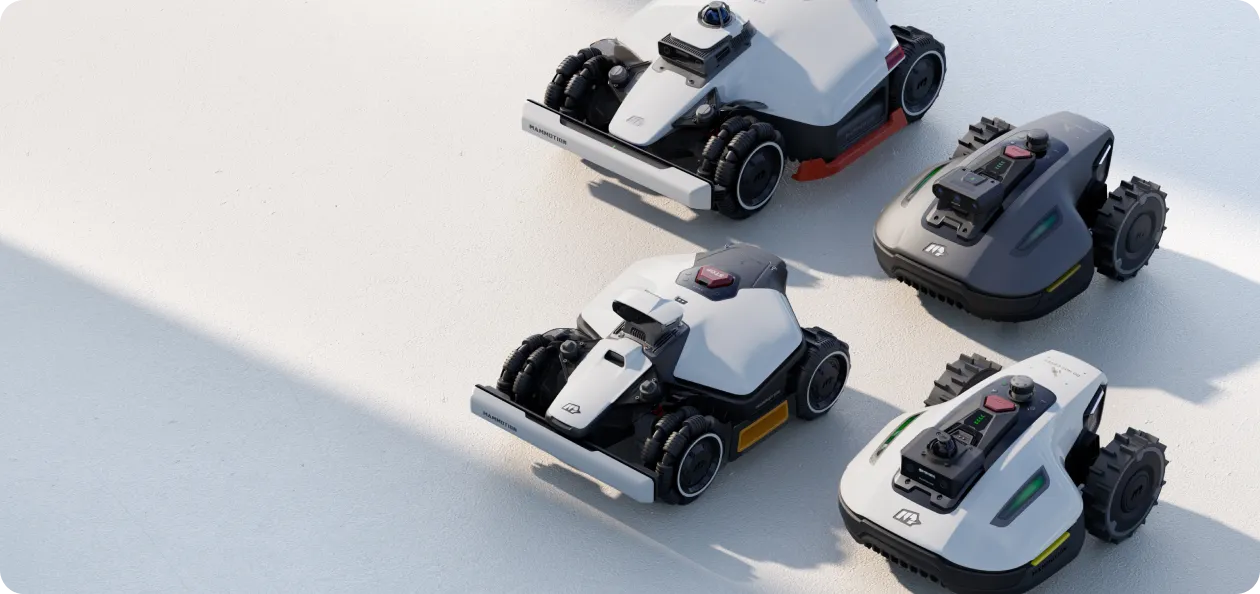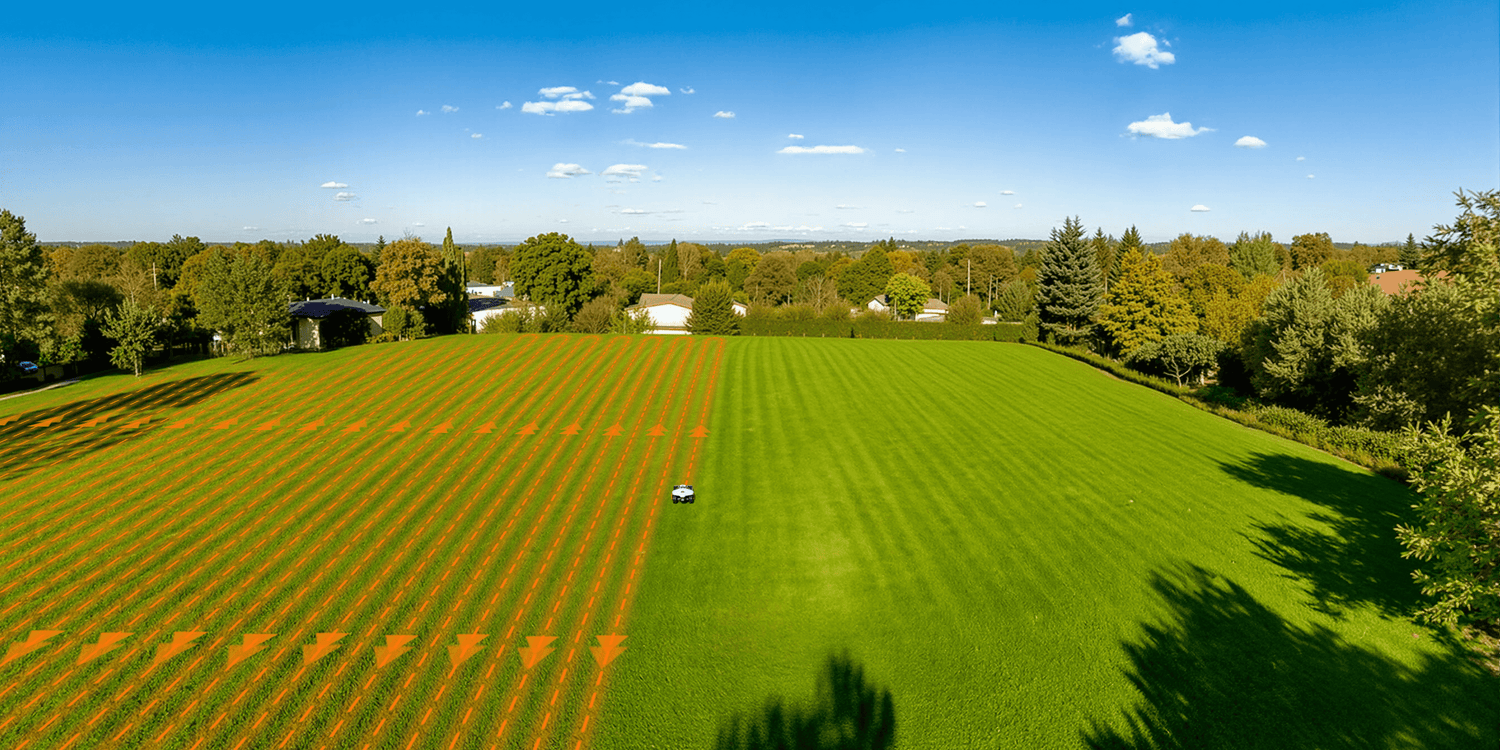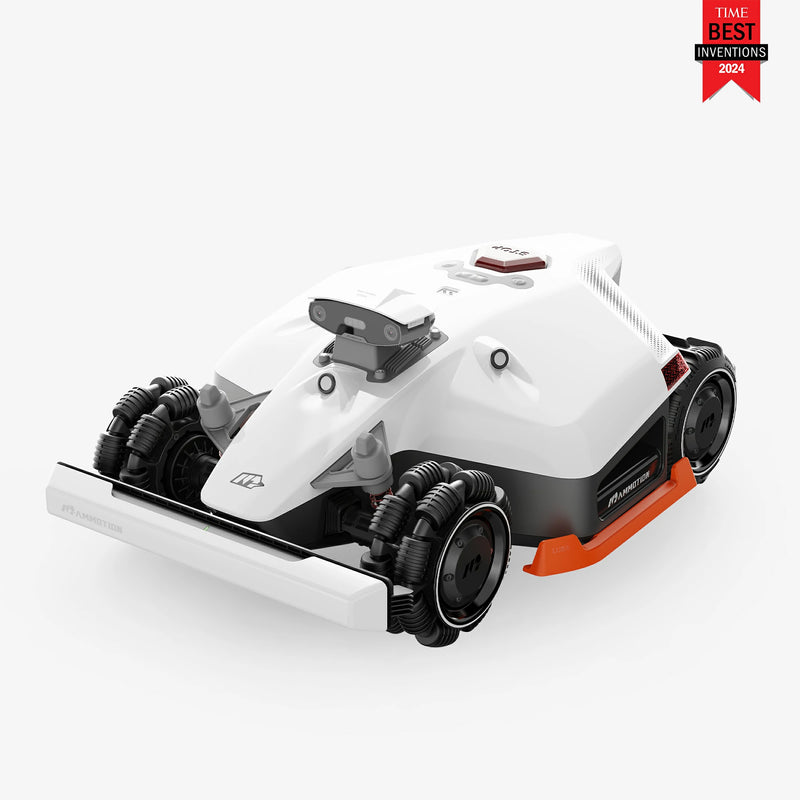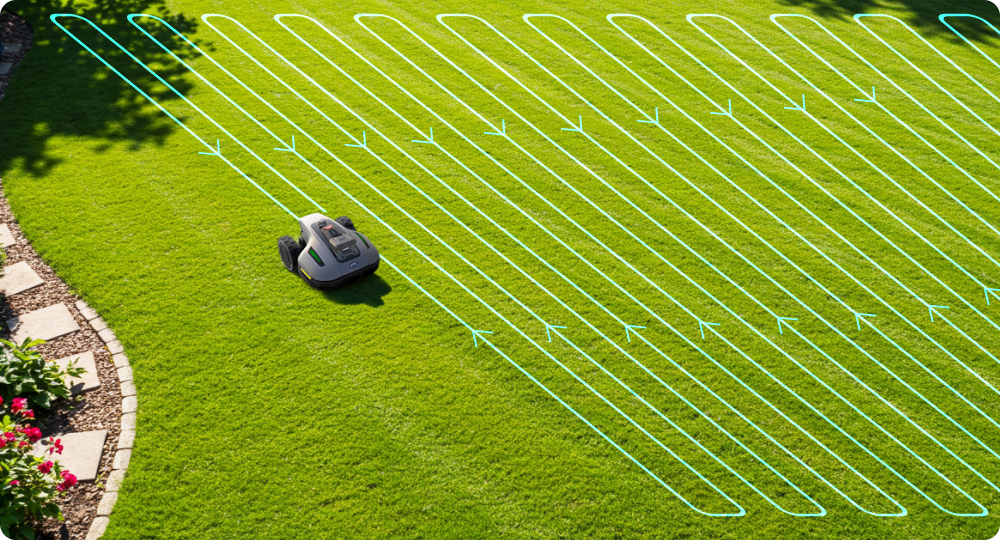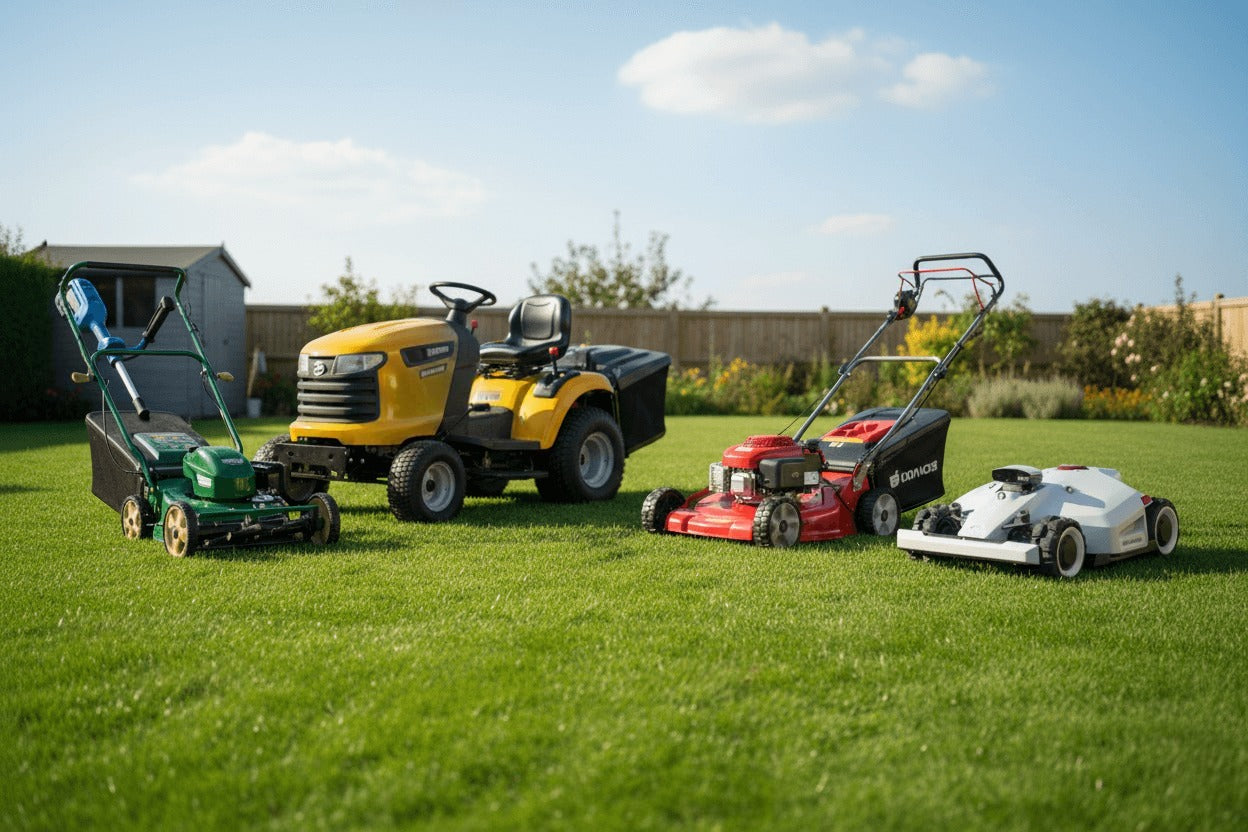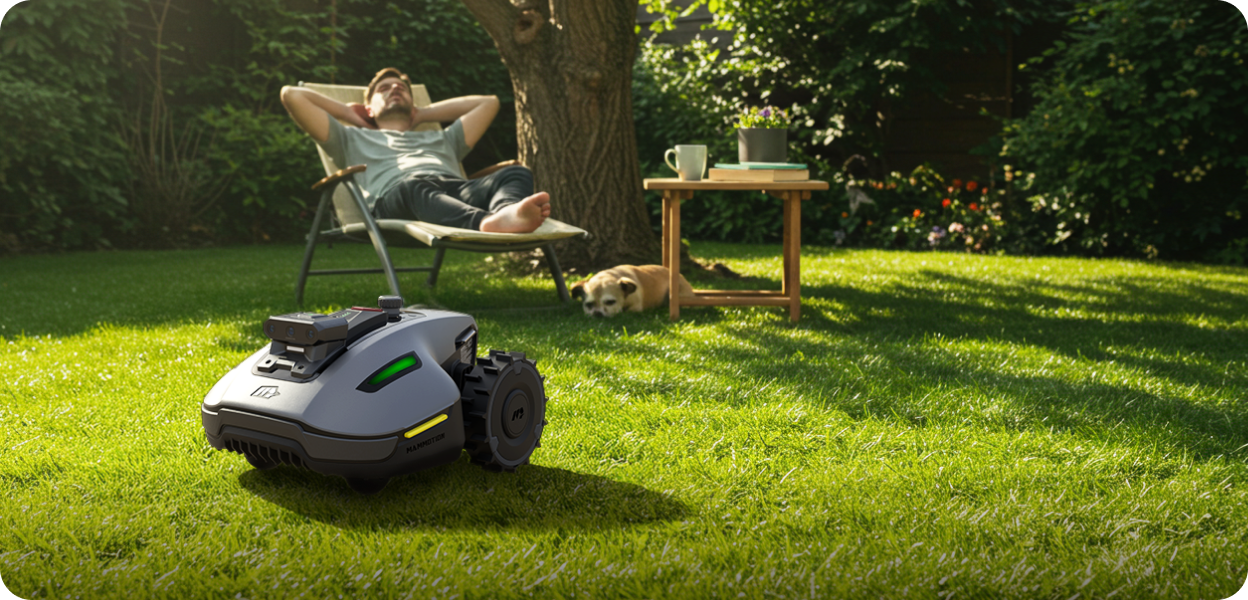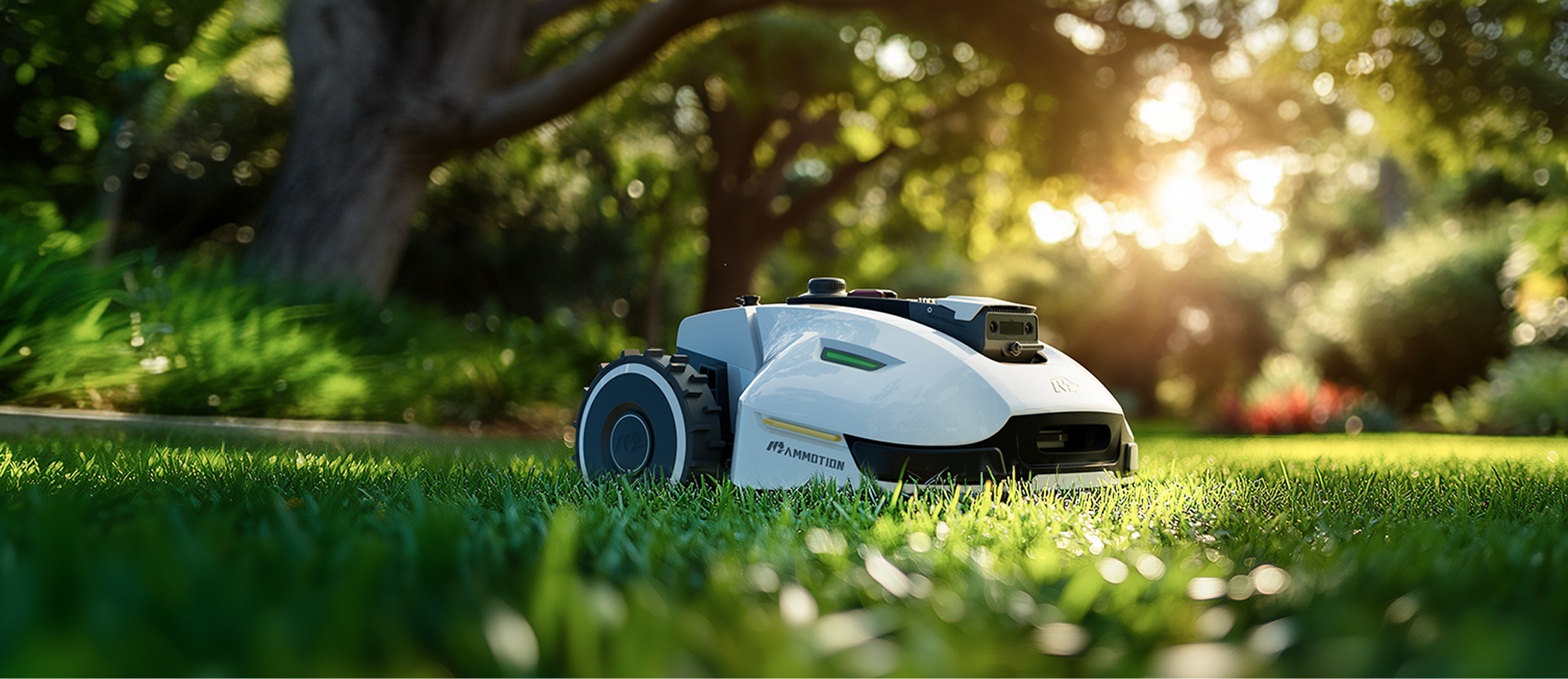As landscaping needs evolve and labor costs continue to rise, more commercial property managers and professional landscapers are turning to automation to maintain large-scale lawns efficiently. Among the most promising innovations in this space are commercial robotic lawn mowers—self-operating machines that can trim expansive green areas with minimal human intervention.
Unlike their residential counterparts, commercial robotic mowers are designed for continuous, high-performance operation across large and complex terrains such as sports fields, corporate campuses, municipalities, and parks. Equipped with advanced technologies like GPS-guided navigation, RTK positioning, and AI-powered obstacle detection, these machines offer a modern, eco-friendly alternative to traditional gas-powered equipment.
In this article, we’ll explain exactly what commercial robotic mowers are, how they work, and why they’re rapidly transforming the landscaping industry. Whether you manage public spaces or run a landscaping business, this guide will help you understand if robotic mowing is the right solution for your needs.
What Is a Commercial Robotic Lawn Mower?
A commercial robotic lawn mower is an autonomous, battery-powered machine specifically engineered to maintain large-scale grassy areas without the need for continuous human operation. Unlike small residential models, commercial robotic lawn mowers are built to handle higher workloads, longer operating hours, and more challenging terrains—making them ideal for settings like sports complexes, business parks, schools, golf courses, and municipal grounds.
How Commercial Mowers Differ from Residential Models
While both residential and commercial robotic mowers share the goal of autonomous lawn care, there are critical differences:
- Coverage Area: Residential mowers typically cover up to 2.5 acres, while commercial models can manage up to 2–10 acres per unit (or more when operated in fleets).
- Navigation Precision: Commercial mowers often use RTK GPS, allowing for centimeter-level accuracy without physical boundary wires.
- Durability: Commercial machines are designed for daily, high-frequency use, with weather resistance and reinforced components.
- Connectivity: Many commercial units support remote monitoring, multi-zone control, and real-time alerts through cloud platforms.
- Cutting Power: Larger cutting decks and multiple blade systems allow for faster mowing cycles, even on uneven or sloped terrain.
By combining advanced automation with industrial-grade performance, commercial robotic mowers are rapidly becoming a smart alternative to traditional crews using ride-on or push mowers—especially for businesses looking to save on long-term labor and fuel costs.
How Do Commercial Robotic Mowers Work?
At the heart of every commercial robotic lawn mower lies a combination of smart navigation, precision cutting, and automated power management. These machines are designed to operate autonomously, efficiently, and safely across large, often complex, outdoor environments.
Let’s break down the core systems that make these autonomous mowers work:
Navigation and Mapping Systems
Commercial robotic mowers navigate using a combination of GPS, RTK (Real-Time Kinematic) positioning, inertial sensors, and sometimes even vision-based SLAM (Simultaneous Localization and Mapping). These technologies enable the mower to map the lawn, plan its path, and move in straight, efficient lines.
- RTK GPS offers sub-inch accuracy, allowing for precise mowing without the need for physical boundary wires.
- Built-in sensors help detect obstacles, terrain changes, and edge boundaries, so the mower can stop, reroute, or slow down as needed.
Cutting System and Performance
Commercial mowers are equipped with multiple rotary blades or disc-style cutting systems that provide consistent trimming across wide areas.
- Most models use a “little and often” approach—cutting a small amount of grass frequently for a well-manicured finish.
- Cutting height is fully adjustable, typically ranging from ¾ inch to 3 inches, depending on turf type and season.
- Some machines can handle slopes up to 50% (or more), making them effective on uneven or rolling terrain.
Charging and Power Management
These mowers are powered by high-capacity lithium-ion batteries, offering quiet, emission-free operation. Most commercial units are docked at automated charging stations, where they return when low on power.
- Advanced systems plan mowing routes based on battery levels, ensuring full area coverage with minimal downtime.
- Charging times vary, but most mowers can fully recharge in 60 to 90 minutes, and operate for 3 to 6 hours per charge.
Safety and Anti-Theft Features
Safety is a top priority in commercial environments, especially in public or high-traffic areas.
- Sensors detect humans, animals, or objects, causing the mower to immediately stop or reroute.
- Blades are automatically disabled when the mower is lifted, tilted, or bumped.
- Most commercial models include PIN-code protection, alarm systems, and GPS tracking to deter theft and misuse.
Key Benefits for Commercial Robotic Mowers
Investing in commercial robotic mowers offers a range of benefits that go far beyond automation. For property managers, landscaping contractors, municipalities, and school districts, these machines can lead to significant long-term savings, better turf quality, and reduced environmental impact—all while minimizing labor dependence.
Here are the top advantages of adopting robotic mowers for commercial use:
1. Reduced Labor Costs
Labor shortages and rising wages have made it increasingly difficult to maintain large green spaces cost-effectively. Robotic mowers:
- Operate autonomously 24/7 without breaks or overtime
- Free up landscaping crews for higher-value tasks like edging, pruning, and planting
- Reduce the need for seasonal hiring and training
2. Consistent, High-Quality Turf Appearance
Because robotic mowers cut frequently and lightly, they promote healthier grass and a consistently neat appearance. Benefits include:
- Fine mulching improves soil nutrition and reduces the need for fertilizer
- Even cutting minimizes turf stress and prevents scalping
- Programmable mowing schedules ensure the lawn always looks freshly cut
3. Environmentally Friendly Operations
Robotic mowers are powered by electric batteries, which means:
- Zero direct emissions—no CO₂, no fumes
- Significantly quieter than traditional gas mowers (great for schools, hospitals, parks)
- Lower energy consumption compared to combustion engines
For businesses committed to sustainability or ESG goals, robotic mowing aligns with green initiatives.
4. Enhanced Safety
These machines are engineered with advanced safety features to minimize risks in commercial settings:
- Built-in sensors detect and avoid people, pets, and objects
- Automatic shut-off when lifted or tilted
- No need for operators to work near slopes, traffic, or machinery blades
Fewer accidents also reduce liability exposure and insurance claims.
5. Scalable and Easy to Manage
With smart fleet management software, organizations can:
- Monitor multiple mowers across different sites in real time
- Receive performance updates, error alerts, and maintenance reminders
- Adjust schedules remotely and track mowing history for compliance
This makes robotic mowing scalable for companies managing dozens or even hundreds of properties.
6. Year-Round Availability
Unlike seasonal crews, robotic mowers:
- Are available year-round, even during early spring and late fall
- Can operate in light rain or dew (depending on the model)
- Don’t call in sick, take vacations, or require supervision
They deliver consistent performance, regardless of staffing fluctuations.
Limitations and Considerations of Commercial Robotic Mowers
While commercial robotic mowers offer compelling advantages, they aren’t a one-size-fits-all solution. Before investing, it’s important to understand their current limitations, infrastructure needs, and operational considerations to determine if they’re the right fit for your property or business.
Here are the main factors to consider:
1. Higher Upfront Investment
Compared to traditional gas-powered mowers, commercial robotic units come with higher initial costs:
- Purchase prices typically range from $5,000 to over $30,000, depending on coverage capacity and features
- Additional costs may include installation (especially for RTK systems or reference stations) and software subscriptions
- Return on investment (ROI) generally takes 1–3 years, depending on labor savings
For budget-conscious buyers, leasing or financing may offer a more accessible entry point.
2. Setup and Installation Complexity
Deploying a commercial robotic mower isn’t always plug-and-play. You’ll need to:
- Create a virtual or physical boundary (depending on model) using GPS, RTK, or guide wires
- Survey and map the mowing area accurately
- Install reference stations or beacons for precise navigation (for RTK models)
While many manufacturers offer professional installation services, it adds to the initial setup cost and time.
3. Edge and Perimeter Finishing Still Needed
Even with precise navigation, robotic mowers often leave a small uncut border along fences, trees, or hardscape edges:
- Manual edging may still be required to maintain a perfectly clean look
- This is especially noticeable in highly manicured commercial landscapes or when presentation is a top priority
Over time, this need may lessen as edge-mowing technology improves.
4. Performance Varies by Terrain and Weather
Not all robotic mowers handle every landscape equally well:
- Slopes above 35% can challenge many models (Mammotion LUBA 2 AWD can climb 80% slope)
- Dense or tall grass may reduce cutting efficiency if not mowed frequently
- Some units may pause during heavy rain, muddy conditions, or extreme temperatures
Pre-assessing your terrain and climate is essential for choosing the right model.
5. Maintenance and Software Updates
While they require less day-to-day attention than traditional mowers, robotic units still need:
- Regular cleaning of blades and wheels
- Occasional software updates or firmware maintenance
- Battery replacement after a few years (usually 3–5)
These are typically minor compared to engine maintenance on gas equipment, but they should be factored into the total cost of ownership.
Summary: Are Commercial Robotic Mowers Worth It for Your Business?
For many commercial property managers and landscaping professionals, the answer is increasingly yes.
If you're responsible for maintaining large areas of turf—such as parks, campuses, business parks, or athletic fields—robotic mowers offer a compelling mix of labor savings, consistent turf quality, and environmental sustainability.
However, success depends on the right fit:
- You’ll benefit most if you manage multiple properties, face staffing challenges, or prioritize long-term cost-efficiency
- You may want to wait or explore hybrid solutions if your site has extremely complex terrain, tight budgets, or frequent edge work requirements
Ultimately, commercial robotic mowing isn't just a trend—it's a shift toward smarter, more autonomous groundskeeping. If your business values efficiency, safety, and sustainability, it's a technology worth serious consideration.
Frequently Asked Questions
1. How much area can a commercial robotic mower cover?
Most models cover between 2 to 10 acres per unit, with the option to scale via multiple units managed from one platform. Some advanced systems can cover even more depending on the layout and mowing schedule.
2. Does a commercial robotic lawn mower work in the rain?
Many are weather-resistant and can operate in light rain or damp conditions. However, heavy rain or muddy turf may temporarily pause operation to protect the machine and preserve lawn quality.
3. How often do the blades need to be replaced or maintained?
Blades should be inspected every 1–2 weeks and replaced every 1–2 months, depending on mowing frequency and grass type. Many models allow for easy, tool-free blade changes.
4. Can commercial robotic mowers mow at night or during off-hours?
Yes. Robotic mowers are extremely quiet (often <60 dB), making them perfect for nighttime or off-hours mowing without disturbing nearby residents or employees.
5. What happens if someone tries to steal commercial robotic mowers?
Most commercial robotic mowers come with GPS tracking, alarm systems, and PIN-code protection. If moved outside its working zone or tampered with, the mower will shut down and notify the operator via the app.
6. Do robotic mowers eliminate the need for human workers entirely?
No, but they significantly reduce manual mowing labor. Teams can refocus on high-skill landscaping tasks like trimming, planting, irrigation, and seasonal clean-up—improving productivity and job satisfaction.










